This was published 4 years ago
Melbourne Design Week tackles the challenges of our times
By Ray Edgar
In 1967 an eccentric former British Army major commandeered a World War II-era anti-aircraft platform, 12 kilometres off the coast of England in the North Sea, and declared it his sovereign state. Paddy Roy Bates and his family even devised for the principality of Sealand a flag, stamps, passports and coins. Initially run as a pirate radio station, Sealand morphed in 2000 into an information-age enterprise. For eight years it hosted another kind of fortress, a data haven; a libertarian space free from Big Brother bullying and copyright controls.
For Vinca Kruk and Daniel van der Velden, Dutch graphic designers intrigued with how authority is constructed – and challenged – Sealand’s maverick spirit inspired a series of self-initiated design projects. In 2003 they produced a series of Sealand stamps and a tourism investment ad for the micronation. In addition to providing a renegade blueprint, the rogue royals’ data haven also inspired a name for the pair’s fledgling design collective.
“[Sealand] was a metaphor for the kind of outpost they sought in design, a refuge where they would be free to think above and beyond practice – a ‘meta haven’,” says design critic Rick Poynor.
Platforms (physical and virtual), borders and nation states continue to preoccupy Metahaven, who are taking part in next month’s Melbourne Design Week. Through posters, books, films, exhibition designs, lecturing and now tapestries, Metahaven weighs into debates on 21st century civic society: from data havens such as Sealand to news outlets such as WikiLeaks, and refugee border crises to corporate control of cloud platforms. Along the way Metahaven challenges graphic design’s traditional role as a service and/or propaganda industry to business and government.
“[Metahaven is] one of the most theoretically informed, strategically adept and articulate groups of thinkers operating in graphic design,” says Poynor.
Brad Haylock, co-curator of Field Report, an exhibition on Metahaven’s recent work to be shown at RMIT Design Hub, agrees. “It can’t be overestimated how influential they’ve been in graphic design in recent years,” he says. “Certainly it’s not the crafted aesthetic we’re so often accustomed to seeing. There’s a deliberate abrasiveness in terms of layering and combination of colours and typefaces in their work. The form echoes the intent of the communication.”
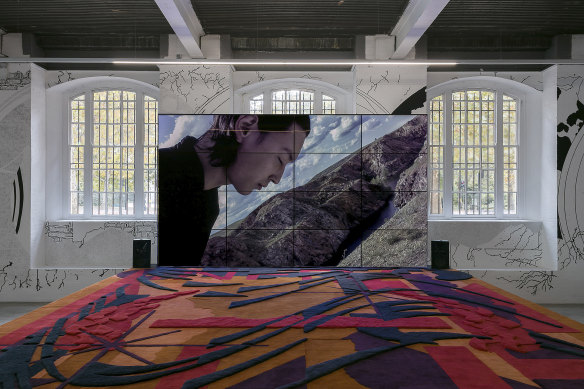
Metahaven, Eurasia (Questions on Happiness), 2018. Installation view at Institute for Contemporary Arts, London, 2018. Credit: Mark Blower
To help raise funds for WikiLeaks (which was under a financial embargo), Metahaven ventured into fashion merchandise. A series of T-shirts was printed with the date of an historically significant ‘'leak'’ beneath a distorted WikiLeaks logo, lending it the aura of hastily copied samizdat. Semi-transparent scarves splashed with camouflage prints reflect the anonymity the website provides whistleblowers. The scarves also played with authenticity. Look closely and the WikiLeaks’ WL adorning the scarves could be mistaken for the much copied Louis Vuitton logo.
That street edge is evident through much of Metahaven’s work, from graffiti sprayed across texts, to the bright angled bars synonymous with warning signs that might frame a poster. Grids allude to the ubiquitous way we map space: from design layouts to lines of longitude and latitude. In Metahaven’s hands these grid lines are often broken and fragmented, suggesting both the designers’ own disruptive impulse as well as a broken system. Elsewhere, the peeling page suggests another layer or story underneath.
“We specialise in the quirky, political, sometimes darker sides of graphic design,” van der Velden has said. “We don’t like corporate imagery. We feel we need a very rich and ambitious visual gesture rather than a sad, ultra-minimalist idea. We love to design in a way that’s visually a richer narrative.”
Along with a new series of specially designed textiles and tapestries called Arrows, The Field Report exhibition concentrates on Metahaven’s recent films, which question who controls the new media landscape.
Eurasia (Questions on Happiness) begins dramatically as a dystopian sci-fi film. Etched into a gold DVD is a map of Eurasia, a flattened world that glints and shines. “There’s been an unexpected emergency in DVD zone 5,” an offscreen voice declares deadpan. What follows is a series of dirt mounds protruding with DVDs. (Region 5, codebreakers, is the DVD region code for Russia and parts of Asia). Memes of ‘‘epic fails’’ – shop shelves falling like dominoes, tanks falling off the back of low loaders, also populate the films.
Like many of Methaven’s films, Eurasia can be maddeningly opaque. “You will understand this later,” a subtitle optimistically declares. I didn’t. Like Metahaven’s motifs of broken grids, the film’s multiplying digressions, unattributed quotes and narration of Russian poems can cause your synapses to snap. Layering imagery is one thing, but layering so many disjointed ideas without a proper narrative thread is … art.
“Contemporary art never has a clear message,’’ says exhibition co-curator Megan Patty. ‘‘Rather it often opens up a line of questioning or a way of thinking about it.”
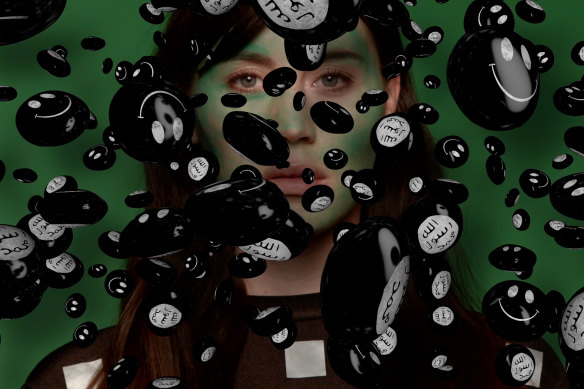
A still from Metahaven's Sprawl (propaganda about propaganda).Credit: NGV
Indeed the films have so many questionable image choices, literal or lame, that one asks whether they’re meant to be ironic. Sprawl (propaganda about propaganda) features numerous upside-down shots, presumably to suggest a world turned upside down. Scenes of people reflected in computer screens in smoky rooms suggests – what else – a world of smoke and mirrors.
More graphically interesting are the tumbling logos that appear regularly in their films and a music video for Holly Herndon. Never-ending streams of cascading emojis, smiley faces and National Security Agency logos conjure a world awash in both a new shorthand and data surveillance. Technological interface icons are another favourite: playback triangles, rectangular blocks (which double as computer fields and redacted texts) and information loading gradient bars float over their images.
The Arrows tapestries distil some of the interface iconography – arrows allude to the playback button and cursor but also the march of history. The map of Eurasia steps out of the digital film onto the analogue world of antiquated textiles where old-world names such as Prussia and Mitteleuropa are overlaid with the reshaped technological landscape known as DVD region 5.
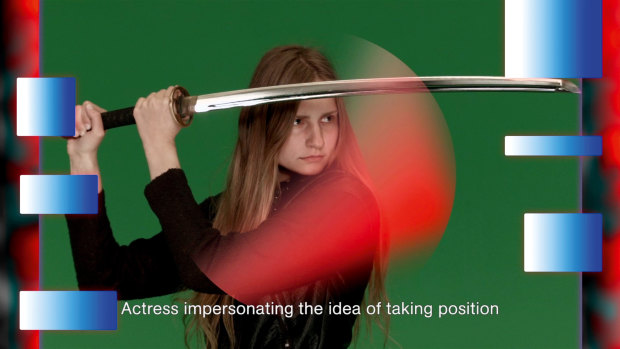
A still from Metahaven's The Sprawl.Credit: NGV
This remapping points to a key section in The Sprawl, which offers perhaps the clearest clue to Metahaven’s concerns. Benjamin Bratton, a philosopher and design theorist known for writing on the cultural implications of computing and globalisation, opines on the shifting nature of nation states. The rise of the world wide web (and the corporations that run its platforms and clouds) has become almost a megastate in itself. It permits the manipulation of elections, facilitation of revolutions and the training of terrorists. Fascinating stuff, if it weren’t so clouded with distracting mash-ups of fact, fiction and poetry.
Why do designers, trained in the art of communication, create something so indirect and unclear?
“That is the point,” says Haylock. “Their practice is proactively advocating for media literacy by provoking audiences without providing any specific answer. Frustration is a necessary part of the particular rhetorical move they’re making. I can’t say that all audiences will take the time to slow down and spend time with the work. That’s a risk of the approach.’’
Helpfully a public program accompanying the exhibition promises to unpack the layers.
Unlike the not-for-profit Adbusters Media Foundation that turns anti-corporate advertising into situationist pranks (much like Banksy’s street art), Metahaven is denser and – despite book titles such as Can Jokes Bring Down Governments? – less humorous.
So what is Metahaven angry about?
“Pretty much everything,” says Haylock.
Metahaven: Field Report is at RMIT Design Hub, March 7-May 9; Metahaven will also speak at the New Normal symposium, NGV International, March 12.
OTHER DESIGN WEEK HIGHLIGHTS
BOOK FAIR
The sixth annual Melbourne Art Book Fair at the NGV includes 40 odd lectures, workshops, launches and performances, plus a panel discussion on illustrated books. The winner of the annual $15,000 Cornish Family Prize for Art and Design Publishing will also be announced.
FILMS
“Magnificent in scope and frightening in subject,” is how film curator Richard Sowada describes Anthropocene. The third environmental epic from Jennifer Baichwal and Edward Burtynsky explores human influence on Earth. Sowada’s selection presents the Australian premier of 11 feature-length documentaries and numerous shorts. Nikolaus Geyrhalter’s latest epic, Earth, is a portrait of our planet from seven locations humans have transformed on a grand scale. The big-screen experience is all the better for appreciating the sublime horror of ‘‘civilisation’’. Other selections include a profile on the New Bauhaus and Palaces for the People, stories of four emblematic buildings from the Socialist era.
FURNITURE
A&A: Exquisite Corpse/Cadavre Exquis
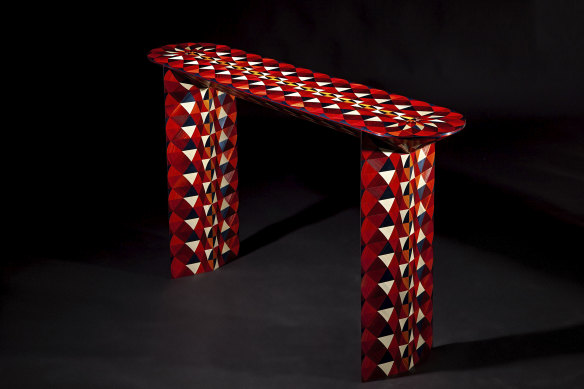
A&A: Exquisite Corpse/Cadavre Exquis, presented by Tolarno Galleries, A&A, Archant, 2019Credit: Josh Purnell
"Exquisite Corpse", the surrealist parlour game, gets a furniture twist. Straw marquetry artisan Arthur Seigneur, a French emigre maintaining the 17th century practice, collaborates with Australian industrial designer Adam Goodrum. Goodrum initiates the shape and pattern while Seigneur finishes the works with hand-dyed straw in custom hues, and a labour-intensive marquetry technique to create a tallboy, console and a credenza.
Black Bamboo: Contemporary Furniture Design From Mer, Torres Strait
During a three-week workshop on Mer (Murray Island), Torres Strait, 18 Indigenous artists collaborated with Melbourne furniture designer Damien Wright to create a contemporary collection of bamboo cabinets, seating and cushions.
Life and Death
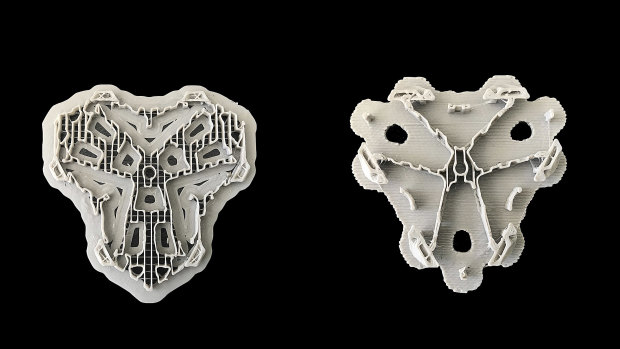
Life and Death, Presented by Friends and Associates.Credit: Mark Richardson
Questioning the life cycle of objects, designers reanimate old ideas and superseded products – from Dale Hardiman’s chandeliers made from cracked phone screens to RMIT industrial designers recasting terracotta with internal cavities insulated with a combination of myclieim and recycled glass. The sacred and profane combine in Damien Wright’s wry, unholy marriage of materials – 10,000-year-old redgum with the ubiquitous plastic garden chair. The worth of materials and how they might be recycled is Wright’s unspoken challenge.
Partu (Skin) by Johnny Nargoodah and Trent Jansen
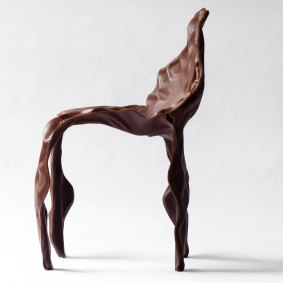
Partu (Skin) by Johnny Nargoodah and Trent Jansen, presented by Gallery Sally Dan-Cuthbert and Arc One.Credit: Abraham Markos
After a making the Collision bench (2017), a leather seat from the mould of old car panels found in the Kimberleys, Johnny Nargoodah and Trent Jansen continue their collaborative exploration upholstering leather on found objects. Partu is an exhibition of two collections comprising a dozen works. Ngumu Jangka Warnti’ (Walmajarri for "whole lot from rubbish") is made by using concrete, hammers and tree stumps to beat a substrate of salvaged aluminium into a rough chair shape and stretching it with leather. The Saddle series fuses two different shapes by stretching leather over them to create a smooth saddle-like form. The pair will also conduct a floor talk explaining the collaborative process between a Nyikina man, who spent much of his life working with leather as a saddler on remote cattle stations, and the avant-garde object designer.
ARCHITECTURE
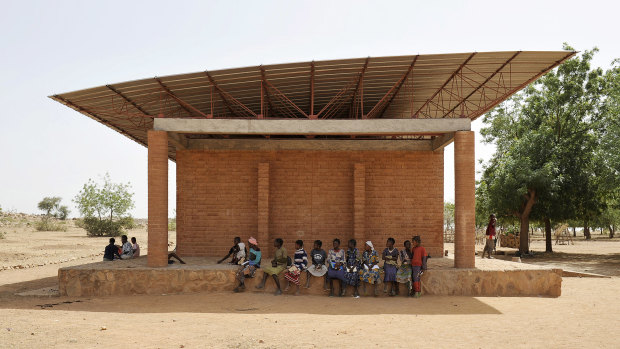
Francis Kere, Architecture Shapes Life, presented by NGV with Architecture Foundation Australia and the Futuna Lecture Series, Gando Primary School by Kéré Architecture, Credit: Erik-Jan Ouwerkerk
West African architect Francis Kéré’s first project in 2001, a primary school in his home village of Gando in Burkina Faso, won the Aga Khan Award. His high-profile design for the 2017 Serpentine Pavilion in London displayed his signature spare elegance. He defines himself as “a bridge between cultures, between the technically and economically developed countries of ‘the north’ and the less developed African countries (the south)”. Responding to the theme "How can design shape life?", Kéré shares how architecture collaboratively realised, rooted in traditional knowledge and specific to its context, will contribute to a positive and dynamic future for Africa.
SPECULATION
Microcultures and Microplastics
For decades plastics offered a cheap and plentiful solution to consumer and industrial needs. Now they present a complex global problem, particularly for ocean life. This exhibition presents design prototypes and projects that turn plastic pollution into potential resources, while raising awareness around the issues of microplastics. Participants include RMIT University, London College of Communication and CSIRO.
DEBATE
E-Waste Challenge
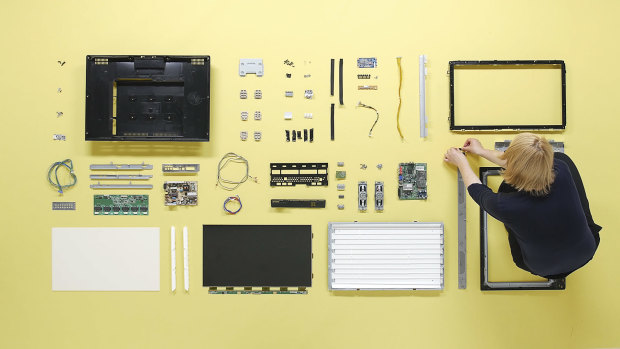
E-Waste Challenge, presented by NGV.Credit: NGV
Every year the world produces 40 million tonnes of electronic waste. ABC’s War on Waste crusader Craig Reucassel heads a judging panel for the $20,000 design challenge (an additional $5000 is on offer for tertiary students) on how best to reduce the problem. The E-Waste Challenge culminates in a "live pitch" grand finale on March 18 at NGV International.
A Royal Commission into the State of Australian Cities
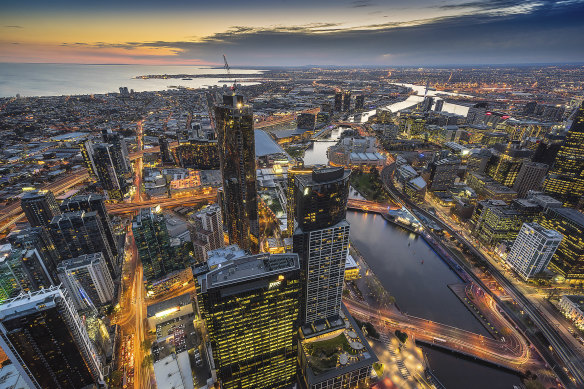
A Royal Commission into the state of Australian cities, presented by Oculus.Credit: Oculus
In the wake of catastrophic fires, biodiversity emergency declarations, climate change inaction, infrastructure failing to keep up with population growth and the unfolding crisis in the construction industry, is it time for a national royal commission into the state of Australian cities? Part theatre, part panel discussion, the mock royal commission brings together experts in environment and policy and political commentators from across the spectrum to debate the most pressing issues facing the planning of our cities.
Melbourne Design Week runs March 12-22. www.ngv.vic.gov.au/melbourne-design-week/